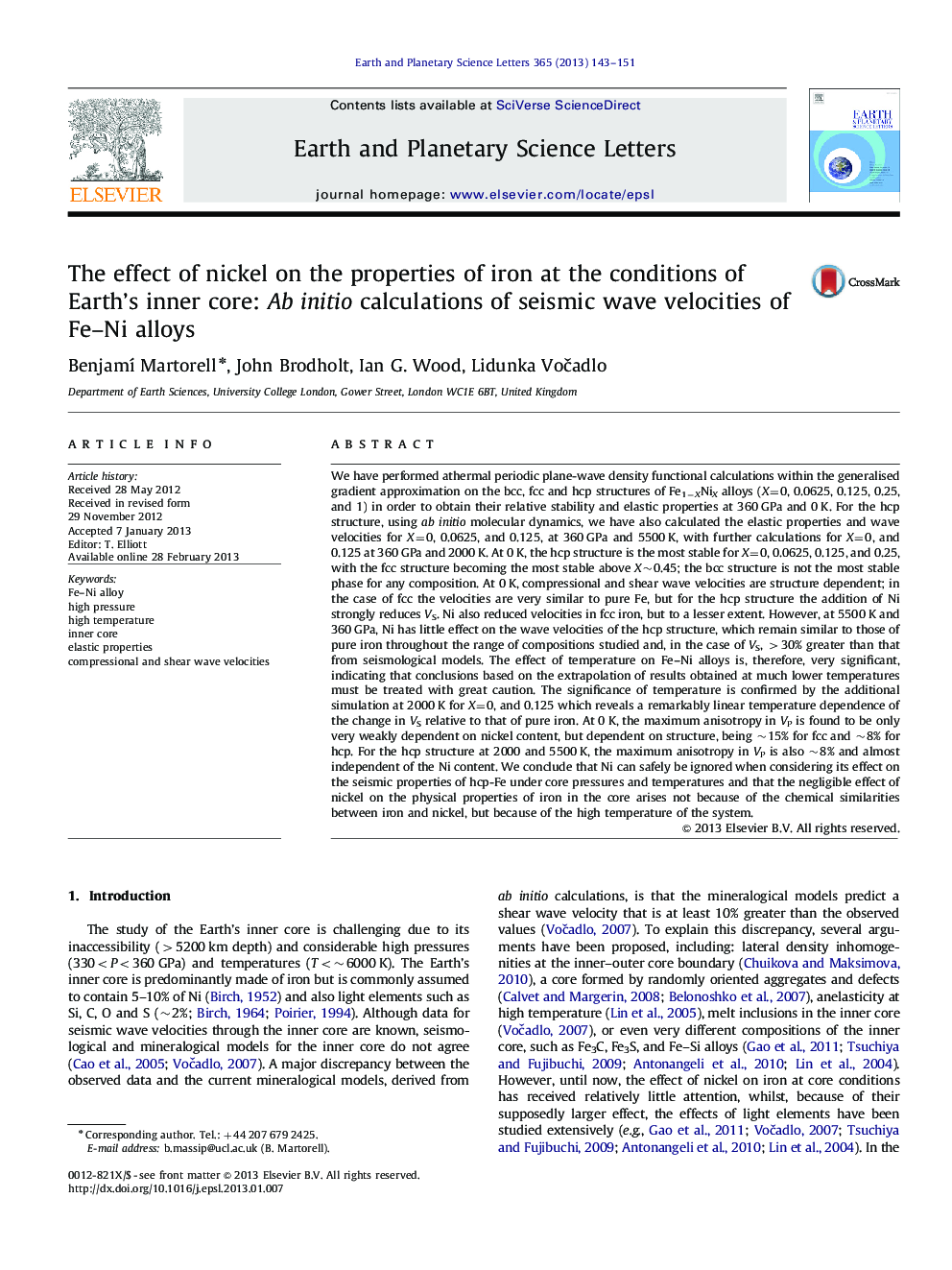| کد مقاله | کد نشریه | سال انتشار | مقاله انگلیسی | نسخه تمام متن |
|---|---|---|---|---|
| 4677136 | 1634788 | 2013 | 9 صفحه PDF | دانلود رایگان |

We have performed athermal periodic plane-wave density functional calculations within the generalised gradient approximation on the bcc, fcc and hcp structures of Fe1−XNiX alloys (X=0, 0.0625, 0.125, 0.25, and 1) in order to obtain their relative stability and elastic properties at 360 GPa and 0 K. For the hcp structure, using ab initio molecular dynamics, we have also calculated the elastic properties and wave velocities for X=0, 0.0625, and 0.125, at 360 GPa and 5500 K, with further calculations for X=0, and 0.125 at 360 GPa and 2000 K. At 0 K, the hcp structure is the most stable for X=0, 0.0625, 0.125, and 0.25, with the fcc structure becoming the most stable above X∼0.45; the bcc structure is not the most stable phase for any composition. At 0 K, compressional and shear wave velocities are structure dependent; in the case of fcc the velocities are very similar to pure Fe, but for the hcp structure the addition of Ni strongly reduces VS. Ni also reduced velocities in fcc iron, but to a lesser extent. However, at 5500 K and 360 GPa, Ni has little effect on the wave velocities of the hcp structure, which remain similar to those of pure iron throughout the range of compositions studied and, in the case of VS, >30% greater than that from seismological models. The effect of temperature on Fe–Ni alloys is, therefore, very significant, indicating that conclusions based on the extrapolation of results obtained at much lower temperatures must be treated with great caution. The significance of temperature is confirmed by the additional simulation at 2000 K for X=0, and 0.125 which reveals a remarkably linear temperature dependence of the change in VS relative to that of pure iron. At 0 K, the maximum anisotropy in VP is found to be only very weakly dependent on nickel content, but dependent on structure, being ∼15% for fcc and ∼8% for hcp. For the hcp structure at 2000 and 5500 K, the maximum anisotropy in VP is also ∼8% and almost independent of the Ni content. We conclude that Ni can safely be ignored when considering its effect on the seismic properties of hcp-Fe under core pressures and temperatures and that the negligible effect of nickel on the physical properties of iron in the core arises not because of the chemical similarities between iron and nickel, but because of the high temperature of the system.
► The discrepancy between mineralogical and seismological models for Vs in the inner core is >30%, even greater than previously suggested.
► Results from athermal simulations or experiments on the effect on Ni on the properties of Fe performed at relatively modest temperatures cannot be safely extrapolated to core conditions.
► At least for the hcp structure, Ni can safely be ignored when considering the seismic properties of Fe under core pressures and temperatures.
► The negligible effect of nickel on the physical properties of iron in the core mainly arises not because of the chemical similarities between iron and nickel, but because of the high temperature of the system.
Journal: Earth and Planetary Science Letters - Volume 365, 1 March 2013, Pages 143–151